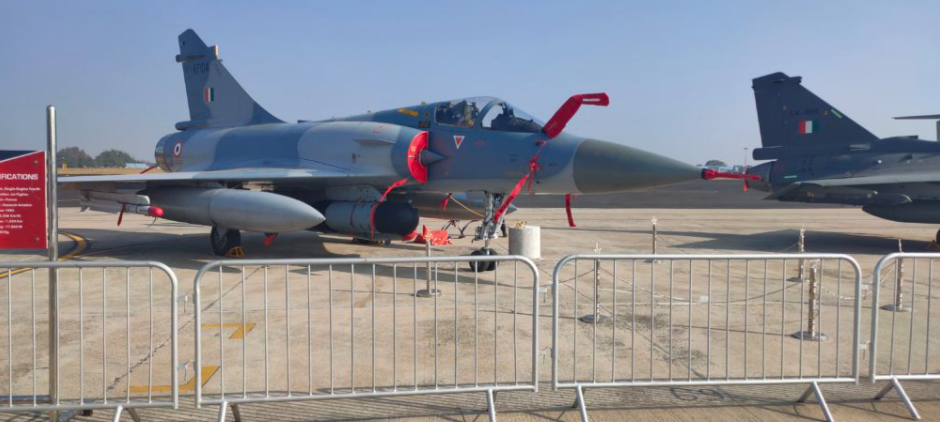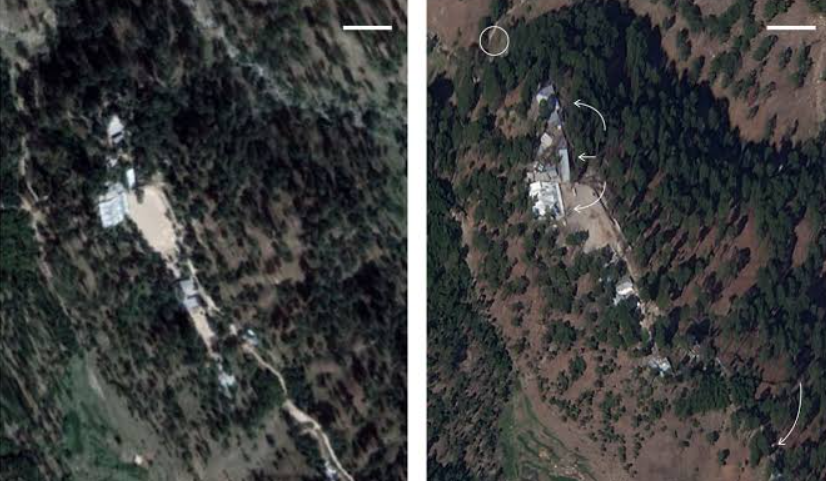Operation Bandar: A new chapter in IAF History
- sswatisingh1105

- Feb 27, 2021
- 5 min read
In the early hours of 24th February, it was business as usual for Mirage-2000 squadrons in Gwalior. These three squadrons, “Tiger”, “Battle Axes” and “Wolfpack” were instrumental in Indian victory in all four wars India fought with Pakistan. In few hours they were about to etch a golden chapter in the history of the Indian Air Force (IAF).
A gruesome attack happened on Indian soil on 14 February, when a suicide bomber of Jaish-e-Mohammad rammed his vehicle full of RDX into a CRPF convoy carrying around 2500 CRPF personnel. The resultant blast killed 40 CRPF personnel. While the nation was tackling the loss of these brave 40 men, a demand for action against the perpetrators was common among every citizen.
On 15 February, after the wreath-laying ceremony, the CCS meeting was called by Prime Minister Modi to discuss the course of action. “Is IAF ready to take any action ?” was a simple and direct question from PM to CAS ACM BS Dhanoa. IAF which was ready to cross LoC and bomb the sites even after the 2008 Mumbai attacks was now at the highest state of readiness and the Chief echoing the stand of his subordinates answered in affirmative. And thus began what was later known as Operation Bandar.
The last time IAF fighter aircraft crossed and bomb sites in Pakistan were in 1971 as a part of the Bangladesh Liberation war. In an attack by No. 20 squadrons “Lightning”, a formation of 4 Hunter aircraft bombed Murid airbase and destroyed five F-86 Sabres of PAF. After 28 years when both nations clashed in the 1999 Kargil war, Indian forces had orders not to cross LoC. Since Pak soldiers in the disguise of Mujahedin entered Indian territory, PAF was not involved. But IAF used their full inventory, with Mirage-2000 Tiger formation led by then Wg Cdr Nambi bombing the tiger hill.
But over the years, the situation started normalising with treaties getting signed and diplomatic visits by ministers and other officials. The relationship turned sour when 10 terrorists attacked the financial capital, Mumbai on 26 Nov 2008. With the only alive terrorist Kasab confessing, the connection of this attack was found to Pakistan. When PM Manmohan Singh chaired the CCS meeting was deciding on the course of action, the Chief of Air Staff, ACM Foli Homi Major assured the Prime Minister that IAF has the capability and is ready for an airstrike on short notice. But the unwillingness of the Cabinet and PM resulted in no military action against Pakistan.
When the Uri attack happened in 2016, a paradigm shift happened when the Special Force units of the Indian Army crossed LoC in retaliatory action. While small operations used to take place, this was the first time GoI accepted that Indian Forces crossed the LoC.
This again turned the relationship bitter between India and Pakistan, which to date remains the same. So, it was quite evident, India won’t sit silently after what happened on 14 February ‘19 in Pulwama, thus Pakistan tightens their security across the Line of Control and other International Borders.
As the go ahead was given by the Government of India, IAF initiated the planning for this operation. This required resources on the ground as well as the use of technological advancement. IAF was given two weeks for developing the action plan for the same. Intelligence assets that provided vital information during the 2016 Strike were made active. Satellite and Heron drones were used to capture images of terror campsites.
Based on this, three locations were selected, Muzzafarabad, Chakothi both in PoK, and Balakot in Khyber-Pakhtunkhwa. The former two were carrying the weight of heavy collateral damage. IAF suggested Balakot for two reasons, first based on intelligence a large presence of militants was confirmed here with less or no collateral damage during the action, and secondly, Balakot is in Pakistan’s province, unlike the two other sites which were part of India illegally occupied by Pakistan. This meant a strike on the sovereign territory of Pakistan, giving out a clear message to the world. Mirage-2000 which was India’s front-line aircraft during the Kargil war was roped in for this operation.
On 24 February, after briefing about this mission, “Tiger” and “Battle Axes” were put off from sorties while a six aircraft formation from the “Wolfpack” squadron was airborne from Gwalior. They linked up with Phalcon AWACS and IL-78 air tanker, for a small drill of the same operation. They didn’t return to Gwalior instead landed in a base near to International Border.
The very next day, a dine-out was organized for outgoing AOC-in-C, Western Air Command, AM C Hari Kumar. Attended by ACM B S Dhanoa, these two officers were among the few officers who knew what is happening near International Border. The business was kept as usual to keep the operation a secret until it is over. As the customary farewell was over around 11 PM, forward airbases across western command got into action.
Past Midnight, the remaining two squadrons of Mirage-2000 made their way toward the western sector. Sukhoi-30mki of “Lion” took off from Jodhpur and joined the flight path of Mirage-2000. This mixed flight pack was moving in direction of Jammu-Sialkot.
Another pack of Sukhoi-30mki of “Desert Tiger” took off from Halwara and moved in the flight path of Bahawalpur. This made the aircraft count to 22 including Phalcon AWACS and Netra.
Meanwhile, in New Delhi PM Modi received the pre-mission brief by ACM B S Dhanoa. Somewhere around 3 AM, the first pack of Mirage-2000 was about to enter Pakistan Airspace, the other two packs began their work.
They were making sure their formation is captured by Pakistan’s radar. The second pack split into two, moving towards Sialkot and Lahore. The one moving towards Sialkot further divided their formation with one moving towards Bahawalpur. Pakistan immediately scrambled their F-16s from Sargodha Air Base to intercept them.
Simultaneously, the third pack moved toward Bahawalpur and more F-16s left Sargodha to intercept this pack of aircraft.
While these two were distracting PAF, the first pack of six Mirage-2000, made its way into hostile territory flying over Keran Sector in Kupwara, maintaining a low altitude. These French-made aircraft were loaded with Israeli Spice-2000 guided missiles. They split and climbed further into 12-14 km in Pakistan’s airspace. As the target location was in sight, Phalcon AWACS broke the radio silence and gave the go-ahead for dropping the bombs. Around 3.30 AM, at an altitude of 27,000 feet, the pilot after getting the go-ahead dropped the missile, followed by the remaining pilots doing the same. Seconds after dropping the bomb, Phalcon gave a warning to this formation about a formation of JF-17 scrambling and moving towards PoK in full throttle. Probably unaware of the exact location of the airstrike.
Phalcon asked the Mirage formation to return immediately with dropping their altitude. Flying over PoK and the targets they considered earlier, this formation of six Mirage-2000 from Wolfpack landed in Srinagar before the dawn. The remaining two packs were called back as well and they landed in some forward base in Punjab.
Un-released satellite images of Balakot JeM camps (Image Credits: Reuters)
History was made, IAF had hit the Pakistan soil after 47 years that too when both the nation were not in a full-fledged war. PM Modi was briefed post the operation, and later a statement was issued by IAF about the action taken in odd hours of 26 February. Assuming that Pakistan will retaliate, forces across the LoC and International borders were put on alert.
Quite similar to the 2016 strikes, Pakistan officials initially rejected the claims, only to accept them in 2021 during a televised interview. While the IAF’s “eye in the sky” Netra gives a detailed history of what happened in the early hours of 26 Feb, the answer remains how come PAF was unable to check the Mirage-2000 which penetrated deep into their territory.






















Comments